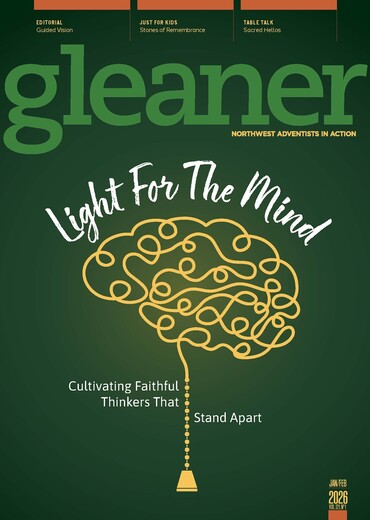Each February, Black History Month provides opportunity to take a searching and fearless inventory of interracial attitudes and relationships. Americans of goodwill aspire to make 2017 a better experience than last year’s national turmoil.
Seventh-day Adventists can lead the way in our churches and communities. A deeper understanding of one core doctrine could help us. I’m referring to the sanctuary, a fundamental belief fallen into neglect after decades of legalistic abuse.
“Sanctuary” can be summarized as providing a shelter from spiritual despair, danger and dysfunction: “We have this as a sure and steadfast anchor of the soul, a hope that enters into the inner place behind the curtain, where Jesus has gone as a forerunner on our behalf, having become a high priest forever” (Heb. 6:19–20).
Back during the dark days of African-American slavery, some runaways managed to flee bondage of Southern plantations via the Underground Railroad — an escape trail with safe houses that stretched all the way north to Canada. There the liberated slaves found sanctuary.
Foundations of Adventist Race Relations
Many early Adventist pioneers supported the Underground Railroad. After Lincoln’s great Emancipation, some Sabbatarians became involved in helping former slaves get the education they deserved and attain other benefits of a free society. The most passionate Adventist advocate for racial reform was Sojourner Truth, perhaps the best known African-American woman of the 19th century.
Ellen White was strategically cautious in confronting racism. She recommended temporary concessions regarding integration of evangelistic endeavors among whites and blacks in regions where racism reigned. Yet she relentlessly appealed for interracial fairness and understanding.
White envisioned a strategy her son Edson followed in ministry to ex-slaves and their children in the Mississippi River Valley. He founded several mission schools that led to the formation of what is now Oakwood University in Alabama — still one of America’s most respected black educational institutions.
Struggling in the 20th Century
After the death of Ellen White, racial progress suffered among Seventh-day Adventists. In the 1930s and 40s, African-American leaders had to agitate long and hard for the right to provide oversight of their own evangelistic efforts and churches.*
Prejudice persisted within the Seventh-day Adventist system. I’ll never forget a visit to South Africa in the 1990s at the invitation of denominational leaders there to assist them in pursuing racial unity within congregations throughout that nation. In a restaurant overlooking the ocean in Cape Town, a retired church leader related how, decades ago, someone showed up one Sabbath from global headquarters to enforce segregation. Black members and other members of color had to migrate to a nearby park and worship under a big tree as white “brothers and sisters” were awarded exclusive use of church facilities.
Here in America, Anglo Seventh-day Adventists were underrepresented (to put it mildly) in the civil rights struggles of the 1960s. Incredibly, the legendary evangelist C.D. Brooks, who baptized my grandfather, initially could not eat lunch in the General Conference cafeteria.
As a college freshman in Washington, D.C., I joined students every Sabbath afternoon who tutored inner-city kids from neighborhoods destroyed in the aftermath of Martin Luther King Jr.’s assassination. I learned later that high church leadership worried what we were doing for racial reconciliation amounted to breaking God’s holy Sabbath.
The church has made progress. In 1979, the North American Division elected a black president, C.E. Bradford. Current staffing at church headquarters reflects racial diversity. Northwest Adventists of all ethnicities share the same local conferences — but with provision made for each group to supervise its own outreach.
Sanctuary in the 21st Century
Moving forward into the uncertainties of a new year, let us remember that we Seventh-day Adventists are a multiethnic global family. We can and must press together in unity — not uniformity enforced by committees that have too often failed God’s purpose while purporting to speak with His authority. The real voice of God on Earth is a loving community of believers, “a letter from Christ … written not with ink but with the Spirit of the living God” (2 Cor. 3:3).
We are on the same team, yet entrusted with different assignments from heaven’s sanctuary — the human resource center of the universe. Whatever our ethnicity, age group or gender, together we comprise the royal priesthood of believers under the leadership of Christ, our High Priest. Each of us has a unique experience and testimony to share about “one Lord, one faith, one baptism.” “Since then we have a great high priest who has passed through the heavens, Jesus, the Son of God, let us hold fast our confession” (Heb. 4:14).
*A transcript of the dramatic discussion between black leaders and white administrators is recorded in Regional Conference Origins, available from www.logos.com/sda.











